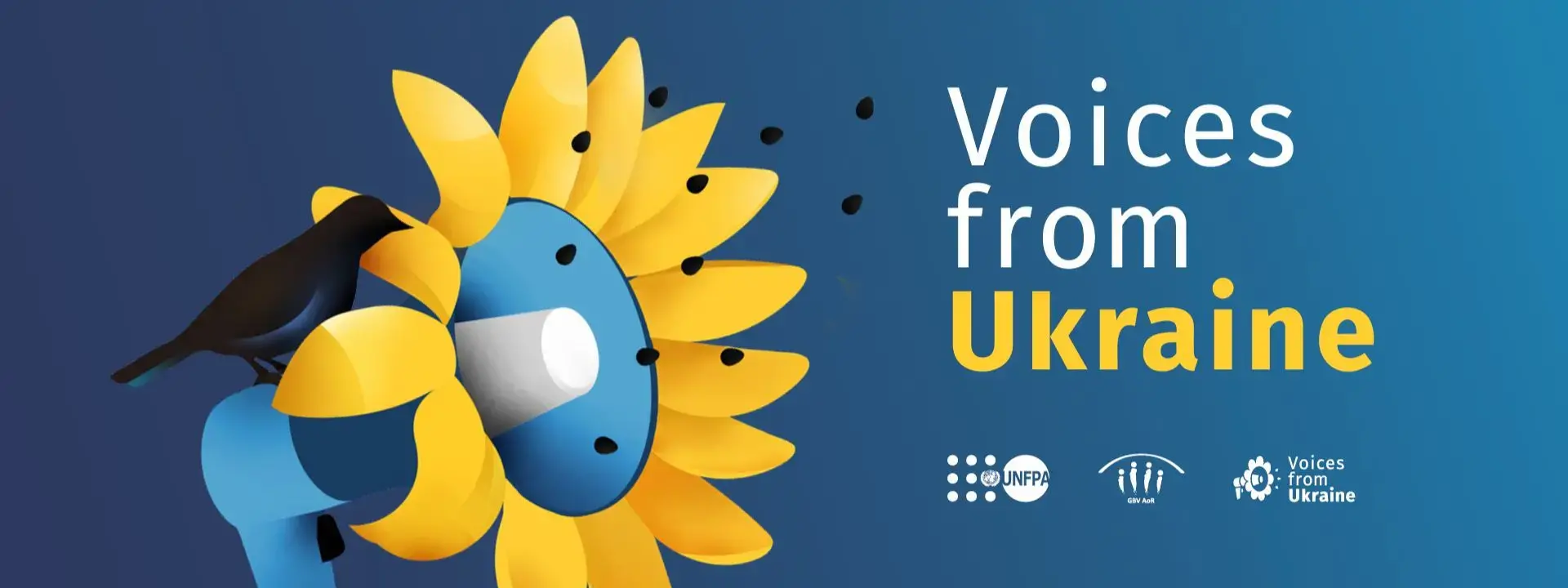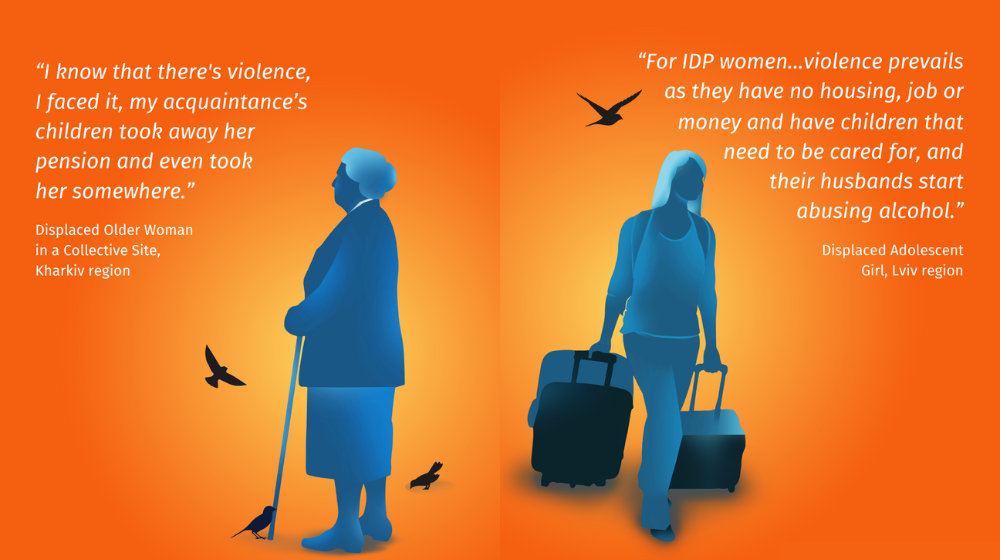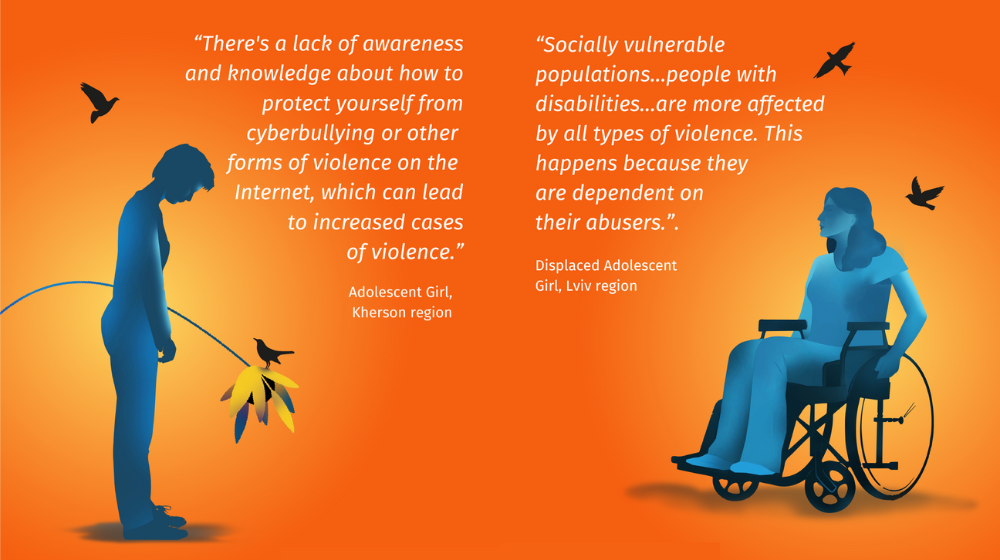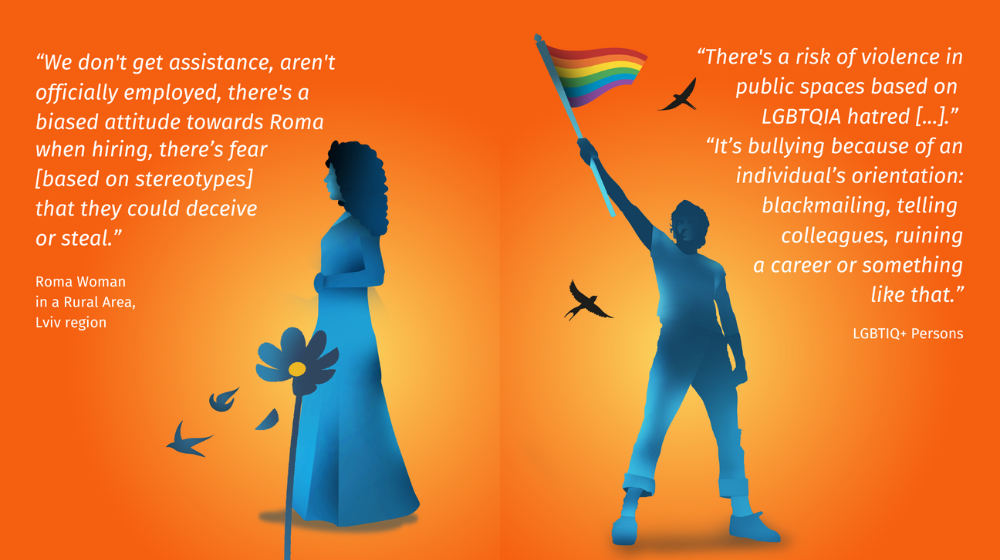About the Voices from Ukraine Initiative
Voices from Ukraine is an in-depth qualitative analysis that examines women's and girls' experiences and gender-based violence (GBV) in Ukraine in 2024. The study uses a proven global methodology that has been successfully implemented across various humanitarian settings, including war-affected contexts. Voices from Ukraine 2024 was led by UNFPA in collaboration with GBV Area of Responsibility (AoR) partners and marks the first year of this initiative in Ukraine.
The Voices research provides vital insights into GBV forms and risks in Ukraine that quantitative approaches and analyses might overlook in order to inform the humanitarian needs overview. The Voices from Ukraine report identifies critical gaps and priorities for humanitarian programming, policy, and advocacy. It provides specific recommendations for humanitarian actors, donors, and policymakers focused on GBV risk mitigation and improving survivors' safe access to services and support.
Drawing primarily from direct quotes from women and girls across Ukraine, the findings offer powerful insights into their daily lives under war, risks of violence they face, and strategies for finding support. Voices also speaks to the resilience and perseverance of women and girls in Ukraine – despite the mounting challenges and risks they face – and their hopes and dreams for the future. Voices from Ukraine serves as an essential resource for GBV programming, humanitarian interventions, policy development, strategic planning, and future research.
Voices from Ukraine serves as an essential resource for GBV programming, humanitarian interventions, policy development, strategic planning, and future research.
“We don’t really talk about that kind of stuff. This is the first time we have been able to discuss it out loud like this.” — Displaced Woman with a Disability or Сaregiver in a Rural Area, Lviv region
In 2024, a pilot study of Voices from Ukraine was conducted in four regions of Ukraine through participatory consultations with women and girls, as well as men and boys, other groups in communities, and GBV experts. The study included Kharkiv region in the East, Kherson region in the South, and Lviv and Zakarpattia regions in the West. Focus group discussions were organized in two communities per region to examine differences between urban and rural contexts.
The study reveals harrowing realities faced by women and girls across Ukraine, emphasizing the urgent need for increased attention and resources to address this crisis. At its core, the research highlights the critical importance of ensuring women's and girls' meaningful participation, inclusion, and empowerment in humanitarian processes.
By understanding risks of GBV in the context and the challenges survivors face in seeking support, we can better understand barriers to accessing humanitarian assistance. This allows us to develop safe and inclusive humanitarian assistance approaches, implement effective GBV mitigation measures, and work toward more survivor-centred care.





